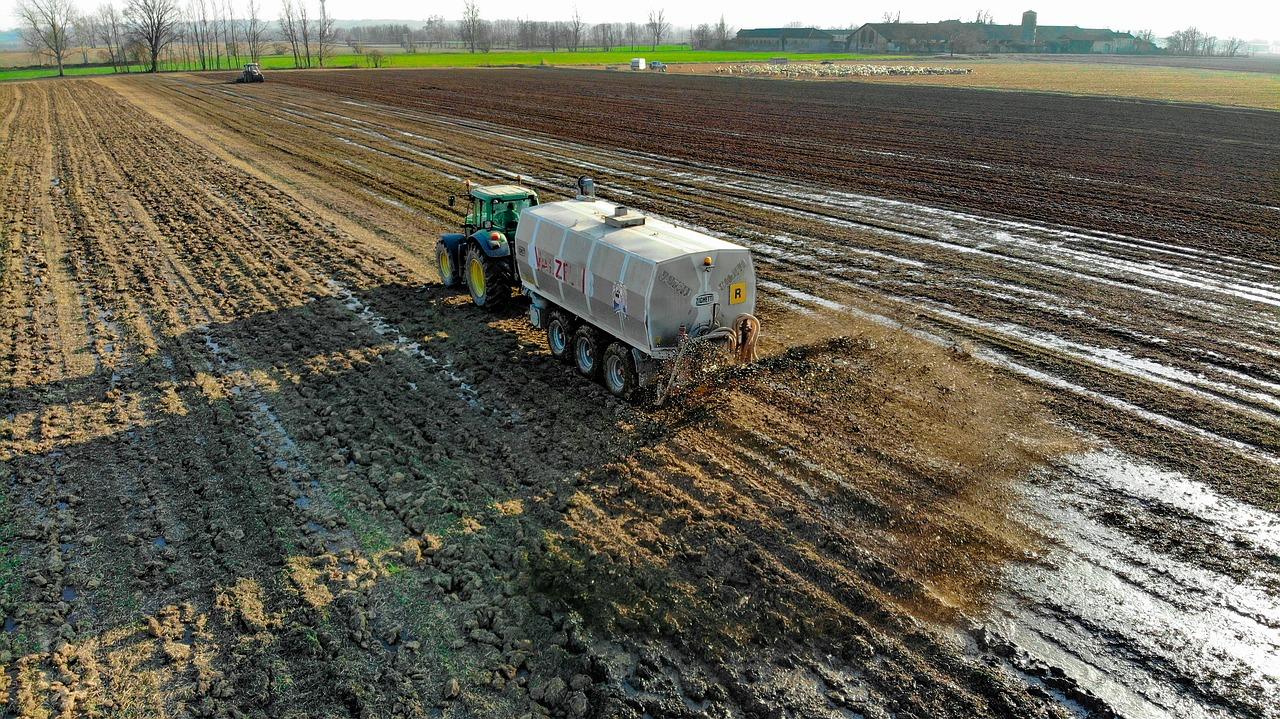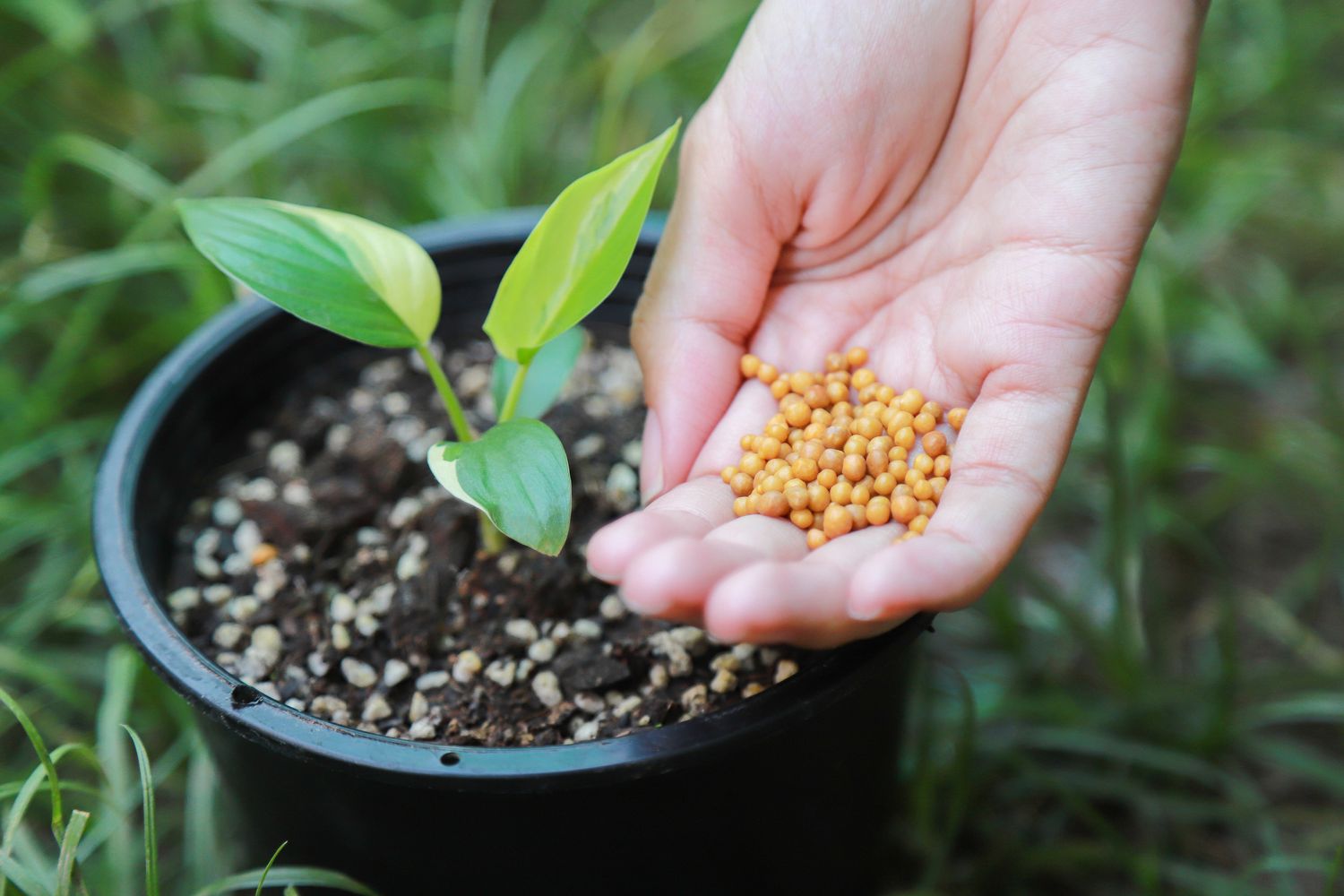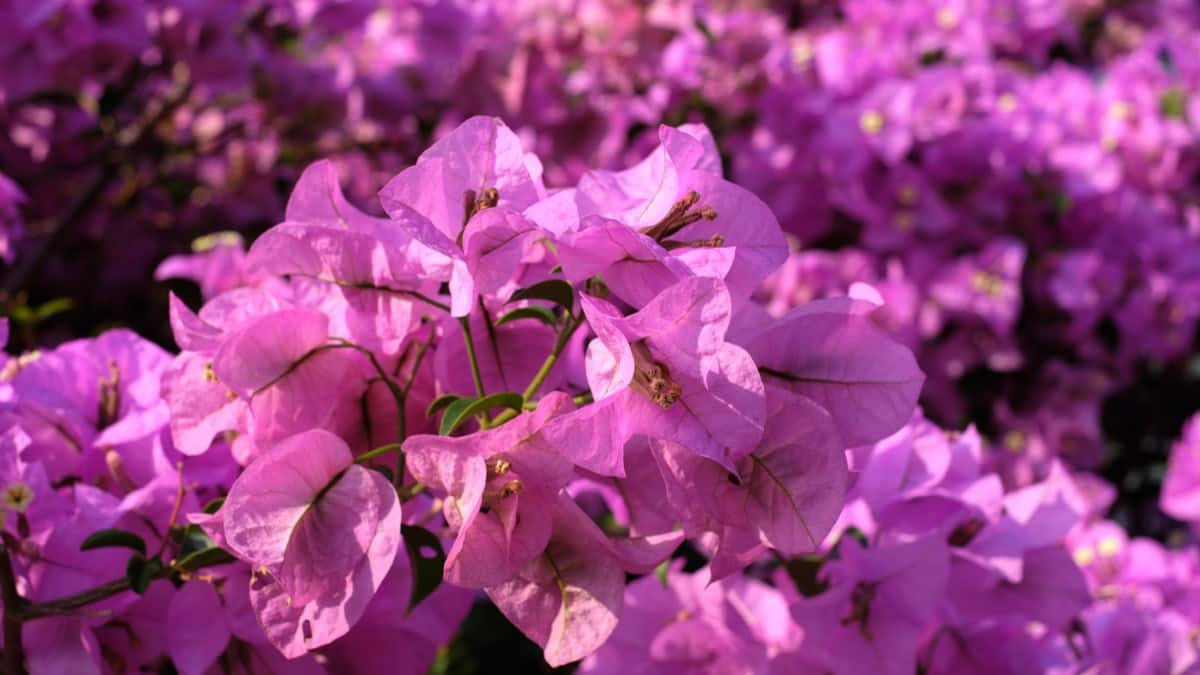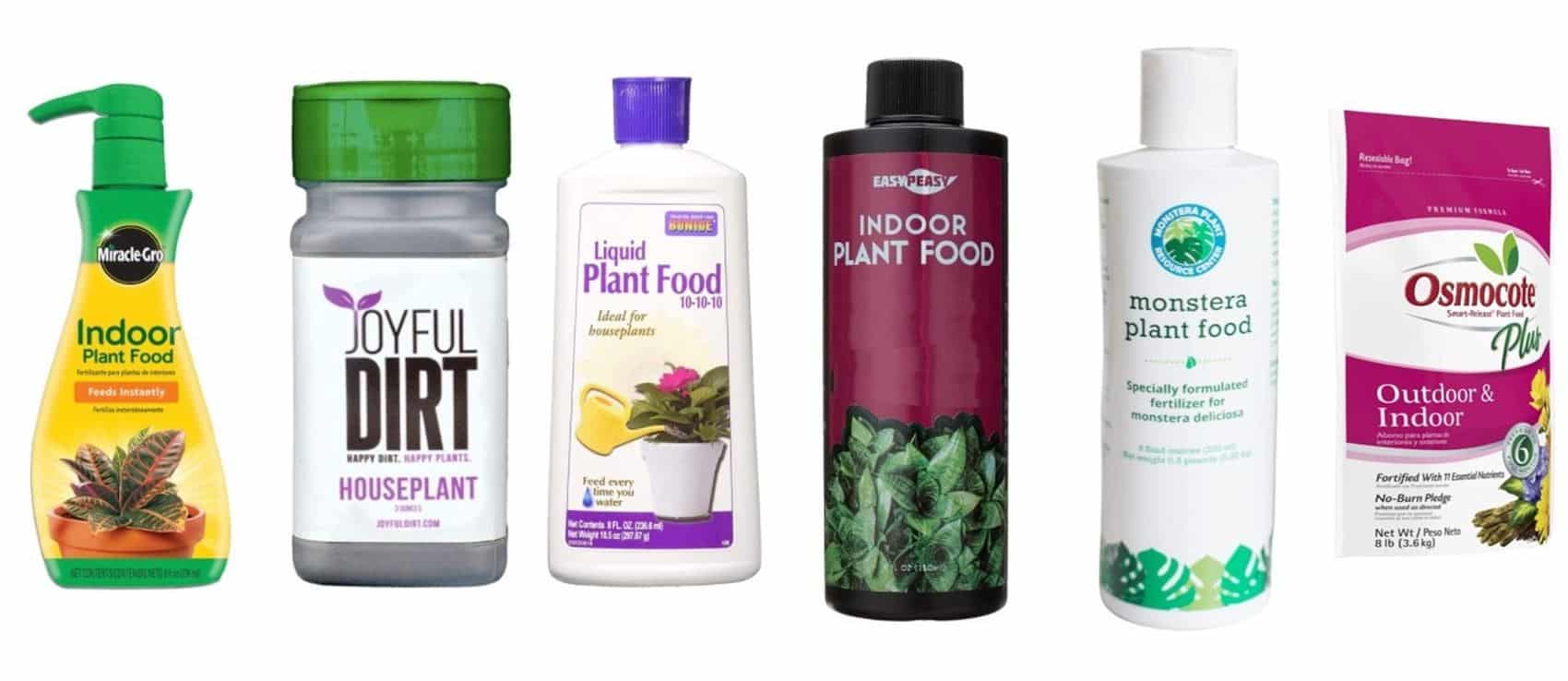Home>Gardening News and Trends>What Is Milorganite Fertilizer
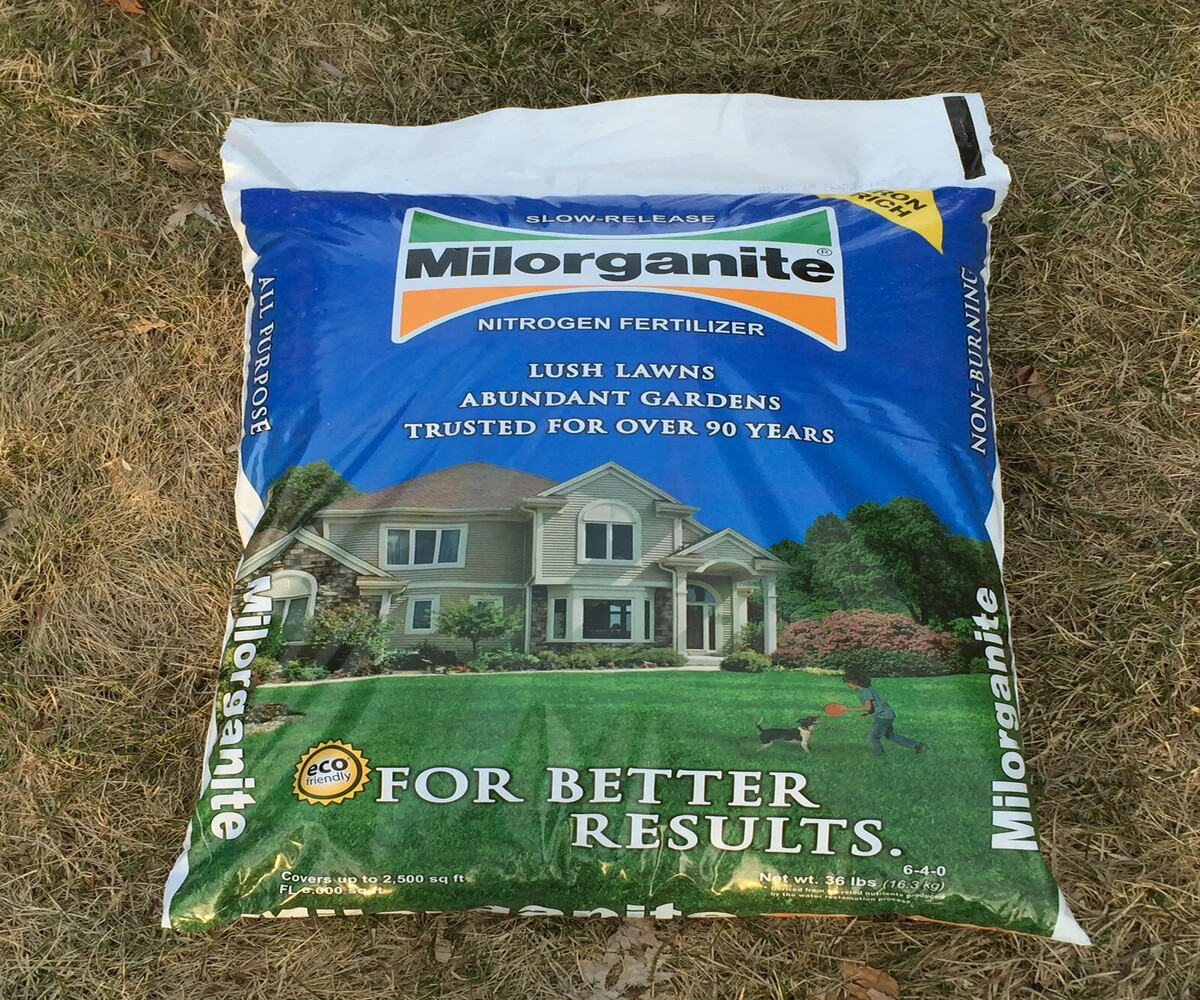

Gardening News and Trends
What Is Milorganite Fertilizer
Modified: January 22, 2024
Discover the latest news on Milorganite fertilizer and learn why it is a popular choice for organic gardening. Find out how to maximize your garden's potential with this effective and sustainable fertilizer.
(Many of the links in this article redirect to a specific reviewed product. Your purchase of these products through affiliate links helps to generate commission for Chicagolandgardening.com, at no extra cost. Learn more)
Table of Contents
- Introduction
- What is Milorganite Fertilizer?
- Composition of Milorganite Fertilizer
- How is Milorganite Fertilizer Produced?
- Benefits of Using Milorganite Fertilizer
- Application and Usage of Milorganite Fertilizer
- Guidelines for Proper Milorganite Fertilizer Application
- Precautions and Safety Measures when Using Milorganite Fertilizer
- Frequently Asked Questions (FAQs) about Milorganite Fertilizer
- Conclusion
Introduction
Welcome to our comprehensive guide on Milorganite fertilizer, a popular and effective organic fertilizer option for both amateur gardeners and professional landscapers. In this article, we will explore what Milorganite fertilizer is, its composition, production process, benefits, application methods, safety measures, and frequently asked questions. So, whether you are a green thumb looking to enhance your garden’s growth or a professional seeking sustainable fertilization options, read on to learn more about this remarkable product.
Milorganite fertilizer is a unique, all-natural fertilizer that has been trusted by gardening enthusiasts for decades. Unlike synthetic fertilizers that often contain harmful chemicals and pollutants, Milorganite is derived from treatment processes of recycled human wastewater. While this may sound unconventional, Milorganite has proven to be a safe and effective way to promote healthy plant growth while minimizing negative environmental impact.
With its high nutrient content and slow-release formula, Milorganite fertilizer offers several advantages over traditional fertilizers. Its composition provides essential nutrients such as nitrogen, phosphorous, and potassium, which are vital for plant growth and development. Additionally, Milorganite contains valuable organic matter that enriches the soil, improves its moisture retention capacity, and promotes the growth of beneficial microorganisms.
Moreover, Milorganite fertilizer has gained recognition for its sustainability. By repurposing treated wastewater that would otherwise be discarded, it reduces the strain on freshwater resources and helps create a closed-loop system. This makes Milorganite an eco-friendly choice for gardeners and landscapers who prioritize sustainable practices.
Throughout this article, we will delve deeper into the composition, production process, benefits, application methods, safety guidelines, and frequently asked questions regarding Milorganite fertilizer. With this knowledge, you will be equipped to make informed decisions and achieve remarkable results in your gardening endeavors.
What is Milorganite Fertilizer?
Milorganite fertilizer is a high-quality organic fertilizer that is derived from the natural treatment processes of wastewater. It is produced by the Milwaukee Metropolitan Sewerage District (MMSD) in Wisconsin, and its name is a combination of “Milwaukee” and “organic.” Milorganite has been in production since 1926 and has gained a reputation for its effectiveness and eco-friendly properties.
The primary source of Milorganite fertilizer is the wastewater generated by residential and industrial activities in the Milwaukee area. This wastewater undergoes a comprehensive treatment process that includes filtration, settling, and disinfection. During this process, the solids are separated from the liquid, and the solids are then further treated to eliminate pathogens and harmful chemicals.
Once the solids have been thoroughly treated, they are dried and pelletized to create Milorganite fertilizer. The resulting pellets are rich in organic matter and contain a balanced blend of essential nutrients, including nitrogen, phosphorus, and potassium. These nutrients are crucial for promoting healthy plant growth and development.
One of the key benefits of Milorganite fertilizer is its slow-release formula. Unlike synthetic fertilizers that provide an immediate burst of nutrients, Milorganite releases its nutrients gradually over time. This ensures a sustained supply of nourishment to plants, preventing the risk of nutrient leaching and allowing for more efficient nutrient absorption.
In addition to its nutrient content, Milorganite fertilizer also benefits the soil in several ways. It improves the soil structure by adding organic matter, which increases its ability to retain moisture and nutrients. This, in turn, enhances the soil’s fertility and promotes the growth of beneficial microorganisms that contribute to overall soil health.
Milorganite is widely used in various applications, including home gardens, lawns, sports fields, golf courses, and agricultural settings. It can be applied to a range of plants, including flowers, vegetables, grass, and trees. Whether you are an avid gardener or a professional landscaper, Milorganite fertilizer provides a reliable and sustainable solution for nourishing your plants.
Next, we will explore the composition of Milorganite fertilizer in more detail, highlighting the nutrients it contains and their roles in promoting plant growth.
Composition of Milorganite Fertilizer
Milorganite fertilizer is composed of a carefully balanced blend of nutrients and organic matter that provide plants with the essential elements they need for healthy growth. The specific composition of Milorganite may vary slightly depending on the production batch, but it generally contains the following key elements:
- Nitrogen (N): Nitrogen is an essential nutrient for plant growth and is responsible for promoting leaf and stem development. Milorganite fertilizer typically contains around 5% nitrogen. The slow-release nature of Milorganite ensures a consistent supply of nitrogen to plants over an extended period, preventing the risk of nitrogen burn and supporting steady, sustained growth.
- Phosphorus (P): Phosphorus is vital for root growth, flower development, and overall plant energy transfer. Milorganite fertilizer generally contains around 2% phosphorus. Phosphorus is particularly important during the early stages of plant growth, as it helps establish a strong root system and promotes healthy flowering and fruiting.
- Potassium (K): Potassium is responsible for a range of critical functions in plants, including water regulation, disease resistance, and overall plant vigor. Milorganite fertilizer typically contains around 0.25% potassium. This nutrient helps plants cope with various environmental stresses and improves their overall resilience.
- Other Nutrients: Milorganite fertilizer also contains trace amounts of other essential nutrients, including calcium, magnesium, and sulfur. Although these elements may be present in smaller quantities, they play crucial roles in maintaining overall plant health and function.
- Organic Matter: In addition to its nutrient content, Milorganite is rich in organic matter. Organic matter improves soil structure, enhances its ability to retain moisture, and promotes the growth of beneficial microorganisms. This, in turn, leads to increased soil fertility, improved nutrient availability, and overall healthier plants.
The unique combination of nutrients and organic matter in Milorganite fertilizer provides a comprehensive and balanced approach to plant nutrition. The slow-release nature of the fertilizer ensures that plants receive a steady supply of nutrients, reducing the risk of nutrient flushes, leaching, and environmental pollution. Furthermore, the organic matter in Milorganite enriches the soil, promoting long-term soil health and sustainability.
Now that we have examined the composition of Milorganite fertilizer, let us move on to the next section, where we will explore how this remarkable fertilizer is produced.
How is Milorganite Fertilizer Produced?
The production of Milorganite fertilizer involves a multi-step process that begins with the collection and treatment of wastewater. The wastewater is obtained from residential, commercial, and industrial sources in the Milwaukee area and undergoes thorough treatment to ensure the removal of contaminants before it is transformed into fertilizer. Here is a closer look at the production process of Milorganite:
- Wastewater Collection: The initial step in the production of Milorganite fertilizer is the collection of wastewater. This wastewater consists of a mixture of water and human waste from sinks, toilets, and other sources. It is collected through the municipal sewage system and transported to the treatment facility.
- Primary Treatment: Once the wastewater reaches the treatment facility, it goes through a primary treatment process. During this stage, large solids and debris are removed from the wastewater through filtration and settling. This separation process helps eliminate physical impurities and prepares the wastewater for further treatment.
- Secondary Treatment: After the primary treatment, the wastewater undergoes secondary treatment, where microbes and bacteria are introduced into the water. These microorganisms help break down organic matter, such as human waste and other organic compounds, present in the wastewater. This process ensures the elimination of harmful pathogens and organic pollutants.
- Solids Separation: Once the secondary treatment is complete, the treated wastewater is separated into two streams: liquid and solids. The liquid portion, which is now cleaner and free from harmful pathogens, is further treated and typically discharged into nearby bodies of water. Meanwhile, the solids portion, known as biosolids, continues on to the next step of the production process.
- Drying and Pelletization: The biosolids obtained from the previous step are dewatered and then dried to remove excess moisture. This drying process is typically achieved through drum dryers or other drying methods. Once the biosolids have reached the desired moisture content, they undergo pelletization. The dried biosolids are compressed into small pellets or granules, creating the final product known as Milorganite fertilizer.
It is important to note that during the entire production process, Milorganite undergoes rigorous testing and quality control measures to ensure its safety and effectiveness as a fertilizer. Regular analysis is conducted to monitor nutrient levels, as well as to confirm the absence of harmful pathogens and heavy metals. This commitment to quality ensures that Milorganite consistently meets the necessary standards for safe and sustainable fertilizer use.
Now that we have explored the production process of Milorganite fertilizer, let us move on to the next section, where we will discuss the numerous benefits of using Milorganite in your gardening and landscaping endeavors.
Benefits of Using Milorganite Fertilizer
Milorganite fertilizer offers a wide range of benefits for both plants and the environment. Its unique composition and production process make it a preferred choice among gardeners and landscapers. Let’s explore the key advantages of using Milorganite fertilizer:
- Effective Nutrient Source: Milorganite fertilizer provides plants with essential nutrients, including nitrogen, phosphorus, and potassium. These nutrients are crucial for healthy plant growth and development. Milorganite’s slow-release formula ensures that the nutrients are gradually released, providing a steady supply and preventing nutrient burn or leaching.
- Enhanced Soil Health: Milorganite contains organic matter that enriches the soil. This organic matter improves soil structure, enhances water retention, and promotes the growth of beneficial microorganisms. The result is improved soil fertility, increased nutrient availability, and better overall soil health.
- Sustainable and Eco-Friendly: Milorganite is produced from treated wastewater, making it a sustainable and environmentally friendly fertilizer. By repurposing wastewater that would otherwise be wasted, Milorganite helps conserve water resources and reduce environmental pollution. Additionally, its slow-release formula reduces the need for frequent applications, minimizing the risk of runoff into waterways.
- Safe for People and Pets: Milorganite fertilizer undergoes rigorous testing and quality control measures to ensure its safety. It is certified by regulatory bodies for use in residential landscapes and gardens. Unlike synthetic fertilizers that may contain harmful chemicals, Milorganite is non-toxic and safe for both people and pets when used according to the recommended guidelines.
- Long-Lasting Results: Due to its slow-release nature, Milorganite provides long-lasting results. It delivers a steady supply of nutrients to plants over an extended period, promoting consistent growth and healthy development. This minimizes the need for frequent reapplication and ensures continuous nourishment for your plants.
- Versatile Application: Milorganite can be used in various applications, including home gardens, lawns, sports fields, golf courses, and agricultural settings. It is suitable for a wide range of plants, including flowers, vegetables, grass, and trees. Its versatility makes it a convenient and reliable choice for all types of gardeners and landscapers.
These benefits make Milorganite fertilizer a favorable option for those seeking an effective, sustainable, and eco-friendly means of nourishing their plants. Whether you are a home gardener looking to enhance your flower beds or a professional landscaper in charge of maintaining lush green lawns, Milorganite delivers remarkable results while prioritizing the well-being of both plants and the environment.
Now that we have explored the benefits of using Milorganite fertilizer, let’s move on to the next section where we will discuss the application methods and usage guidelines of this remarkable fertilizer.
Application and Usage of Milorganite Fertilizer
Milorganite fertilizer is known for its ease of use and versatility in various gardening and landscaping applications. Whether you have a small backyard garden or a large lawn, knowing how to properly apply and use Milorganite will ensure optimal results. Here are some guidelines to help you make the most of this remarkable fertilizer:
- Timing: Milorganite can be applied throughout the year, but it is best to avoid extreme weather conditions such as very hot or cold temperatures. It is recommended to apply Milorganite when the soil temperature is consistently above 55°F (13°C) to allow for proper nutrient absorption by plants.
- Application Rates: The recommended application rate for Milorganite is typically 32 pounds per 2,500 square feet or 1 bag per 2,500 square feet. However, it is always a good practice to refer to the specific guidelines provided on the Milorganite packaging or consult with a local gardening expert for precise rates based on your specific soil conditions and plant types.
- Application Methods: Milorganite can be applied using various methods, including spreading by hand, using a broadcast spreader, or using a drop spreader. The chosen method depends on the size of the area to be fertilized and personal preference. Whichever method you choose, ensure an even distribution of the pellets for consistent nutrient coverage.
- Watering: After applying Milorganite, it is essential to water the area thoroughly. This helps activate the slow-release process of the fertilizer and enables the nutrients to penetrate the soil and reach the plant’s root zone. Watering also helps prevent the pellets from being washed away or sitting on the surface of the soil.
- Frequency of Application: Milorganite’s slow-release formula provides nutrients to plants gradually over time. As a result, it requires less frequent applications compared to synthetic fertilizers. Generally, applying Milorganite two to three times per growing season, with a spacing of 6 to 8 weeks between applications, is sufficient to nourish your plants effectively.
- Avoiding Over-application: While Milorganite is a safe and non-burning fertilizer, it is crucial to follow the recommended application rates to avoid over-application. Using excessive amounts of Milorganite can lead to nutrient imbalances and potential harm to plants. Always refer to the packaging instructions or seek advice from a gardening professional.
Remember, every garden and lawn is unique, so it is essential to consider factors such as soil type, specific plant requirements, and local climate conditions when determining the best application and usage practices for Milorganite fertilizer. With proper application and adherence to recommended guidelines, you can achieve beautiful, healthy plants and a thriving garden or landscape.
In the next section, we will discuss some additional precautions and safety measures to keep in mind when using Milorganite fertilizer.
Guidelines for Proper Milorganite Fertilizer Application
When using Milorganite fertilizer, following proper application guidelines is essential to ensure optimal results and minimize any potential risks. Here are some guidelines to help you apply Milorganite correctly:
- Read the Instructions: Before applying Milorganite, carefully read and follow the instructions provided on the packaging. This will give you specific recommendations on application rates, timing, and any additional guidelines that may be applicable.
- Measure and Calculate: Determine the area you plan to fertilize and calculate the amount of Milorganite needed based on the recommended application rate for that area. Using too little or too much fertilizer can lead to nutrient deficiencies or excesses, respectively.
- Prepare the Area: Ensure that the area to be fertilized is free from debris, such as fallen leaves or existing weeds. Raking or mowing the area beforehand can help create a clean and even surface for fertilization.
- Apply Evenly: Whether applying by hand or using a spreader, ensure that the Milorganite fertilizer is distributed evenly across the target area. This will help provide consistent nutrient coverage and avoid over-concentration in some spots.
- Water Thoroughly: After applying Milorganite, water the fertilized area thoroughly. Adequate watering helps activate the slow-release properties of the fertilizer and allows the nutrients to reach the plant’s root zone. It also aids in preventing the pellets from sitting on the surface or being washed away.
- Store Properly: If you have leftover Milorganite fertilizer, store it in a cool and dry place. Proper storage will help maintain the quality and effectiveness of the fertilizer for future use.
- Protect Water Sources: When applying Milorganite near water bodies such as ponds, lakes, or streams, take caution to prevent direct runoff into these areas. Excessive runoff can lead to nutrient pollution and harm aquatic ecosystems. To minimize the risk, apply Milorganite on dry soil and avoid application before heavy rainfall.
- Maintain Safety: While Milorganite is safe to use, it is recommended to wear gloves and protective clothing when handling the fertilizer. This will help prevent any potential skin irritation or allergic reactions. After applying Milorganite, wash hands thoroughly with soap and water.
- Keep Pets and Children Away: To ensure their safety, keep pets and children away from the fertilized area until the Milorganite has been watered in and absorbed into the soil.
By adhering to these guidelines, you can maximize the benefits of Milorganite fertilizer while also minimizing any potential risks. Always remember to follow local regulations and consult with gardening professionals if you have any specific concerns or questions regarding the application of Milorganite.
In the next section, we will address some frequently asked questions (FAQs) about Milorganite fertilizer to further enhance your understanding of this organic fertilizer.
Precautions and Safety Measures when Using Milorganite Fertilizer
While Milorganite fertilizer is safe to use when handled properly, it is important to follow certain precautions and safety measures to ensure the well-being of both users and the environment. Here are some key precautions to keep in mind:
- Wear Protective Gear: When handling Milorganite fertilizer, it is recommended to wear gloves, long sleeves, long pants, and closed-toe footwear. This will help protect your skin from potential irritation or allergic reactions.
- Keep Out of Reach: Store Milorganite fertilizer in a secure location that is out of reach of children and pets. Accidental ingestion or contact with the fertilizer can cause harm, so it is important to prevent any unauthorized access.
- Follow Package Instructions: Read and follow the instructions provided on the Milorganite packaging. This includes guidelines on application rates, timing, and any specific safety precautions that may apply.
- Minimize Dust and Inhalation: When applying Milorganite, try to minimize dust production to avoid inhalation. This can be done by ensuring the fertilizer is not excessively disrupted or agitated during application.
- Wash Hands Thoroughly: After handling Milorganite, wash your hands thoroughly with soap and water. This will help remove any residual fertilizer and prevent inadvertent ingestion or transfer of the product.
- Avoid Excessive Application: Follow the recommended application rates to avoid over-fertilization. Excessive application can result in nutrient imbalances, potential harm to plants, and environmental pollution through nutrient runoff.
- Prevent Runoff: To minimize the risk of nutrient runoff, avoid applying Milorganite fertilizer before heavy rainfall or on steep slopes. This will help ensure that the fertilizer is absorbed by the soil and not washed away into nearby water sources.
- Consider Local Regulations: Be aware of any specific regulations or restrictions pertaining to the use of Milorganite fertilizer in your area. Some regions may have guidelines regarding application rates, setback distances from water bodies, or specific restrictions for certain types of landscapes.
- Exercise Caution near Water Bodies: When applying Milorganite near water bodies such as ponds, lakes, or streams, take extra caution to prevent direct fertilizer runoff into these areas. Excessive nutrient runoff can contribute to water pollution and harm aquatic ecosystems.
By taking these precautions and following the recommended safety measures, you can ensure a safe and responsible use of Milorganite fertilizer. If you have any specific safety concerns or questions, it is always advisable to seek guidance from local gardening experts or consult with the product manufacturer.
In the next section, we will address some frequently asked questions (FAQs) about Milorganite fertilizer to further enhance your understanding of this remarkable organic fertilizer.
Frequently Asked Questions (FAQs) about Milorganite Fertilizer
As Milorganite fertilizer gains popularity among gardeners and landscapers, it is natural to have questions about its use, benefits, and safety. Here are some frequently asked questions (FAQs) and their answers to help you gain a better understanding of Milorganite:
- Is Milorganite safe to use in vegetable gardens?
Yes, Milorganite is safe to use in vegetable gardens. It is a natural and organic fertilizer that does not contain any harmful chemicals. However, it is always recommended to wash vegetables thoroughly before consumption. - Can Milorganite be used on lawns?
Absolutely! Milorganite is an excellent choice for fertilizing lawns. Its balanced nutrient composition promotes healthy grass growth and enhances the overall appearance of the lawn. - How often should I apply Milorganite to my plants?
Milorganite should be applied every 6 to 8 weeks during the growing season. This slow-release fertilizer provides a consistent supply of nutrients to the plants over time. - Can I apply Milorganite during hot summer months?
It is best to avoid applying Milorganite during extreme heat conditions. High temperatures can stress plants, and applying fertilizer during this time can potentially lead to fertilizer burn. It is recommended to wait for cooler temperatures or apply in the early morning or late afternoon when temperatures are milder. - Can I mix Milorganite with other fertilizers or chemicals?
It is generally not recommended to mix Milorganite with other fertilizers or chemicals. Milorganite is a complete fertilizer on its own and provides all the necessary nutrients for plants. Mixing it with other products may result in nutrient imbalances or chemical reactions that could harm your plants. - Is Milorganite harmful to pets?
Milorganite is generally safe for pets when applied according to the recommended guidelines. However, it is best to keep pets away from the fertilized area until it has been watered in and absorbed into the soil to prevent ingestion or irritation. - Can I use Milorganite in organic farming?
Milorganite is an approved organic fertilizer and can be used in organic farming. Its organic composition and adherence to strict production standards make it a suitable choice for organic agricultural practices. - Is Milorganite harmful to aquatic life?
When used as directed, Milorganite is not harmful to aquatic life. However, it is important to prevent direct runoff into water bodies to avoid nutrient pollution. Follow proper application techniques and consider setback distances from water bodies to minimize the risk. - Is there an expiration date for Milorganite fertilizer?
Milorganite does not have an expiration date if stored properly. As long as it is kept in a cool and dry place, away from moisture and extreme temperatures, its quality and effectiveness can be maintained for an extended period of time.
These FAQs address some of the common questions associated with Milorganite fertilizer. If you have any specific concerns or other inquiries, it is recommended to reach out to gardening experts or consult with the manufacturer for more detailed information.
Now that we have addressed these frequently asked questions, let’s conclude this comprehensive guide on Milorganite fertilizer.
Conclusion
Throughout this comprehensive guide, we have explored the world of Milorganite fertilizer and discovered its remarkable benefits for plant growth and environmental sustainability. Milorganite offers an effective and eco-friendly solution for nourishing gardens, lawns, and various other landscapes.
With its unique composition and slow-release formula, Milorganite provides plants with essential nutrients, promoting healthy growth, and vibrant blooms. The organic matter in Milorganite enriches the soil, improving its structure, nutrient retention, and overall fertility. By repurposing treated wastewater, Milorganite also contributes to water conservation and creates a sustainable approach to fertilization.
Proper application and usage of Milorganite involve following the recommended guidelines, including timing, rates, and watering practices. By adhering to these guidelines and taking necessary precautions, you can ensure optimal results while maintaining safety for yourself, children, pets, and the environment.
From vegetable gardens to lawns and everything in between, Milorganite has proven to be a reliable, efficient, and safe organic fertilizer choice. Its benefits extend beyond plant nourishment, contributing to the preservation and enhancement of soil health and water resources.
As you embark on your gardening and landscaping journey, consider incorporating Milorganite into your routine. Remember, growing and caring for plants is a continuous learning process, and there are always new techniques and products to explore. Stay curious, seek guidance from experts, and embrace sustainable practices to create thriving and beautiful landscapes.
We hope this guide has provided you with valuable insights into the world of Milorganite fertilizer. By harnessing the power of nature and sustainable practices, you can nurture your plants while minimizing your impact on the environment.


